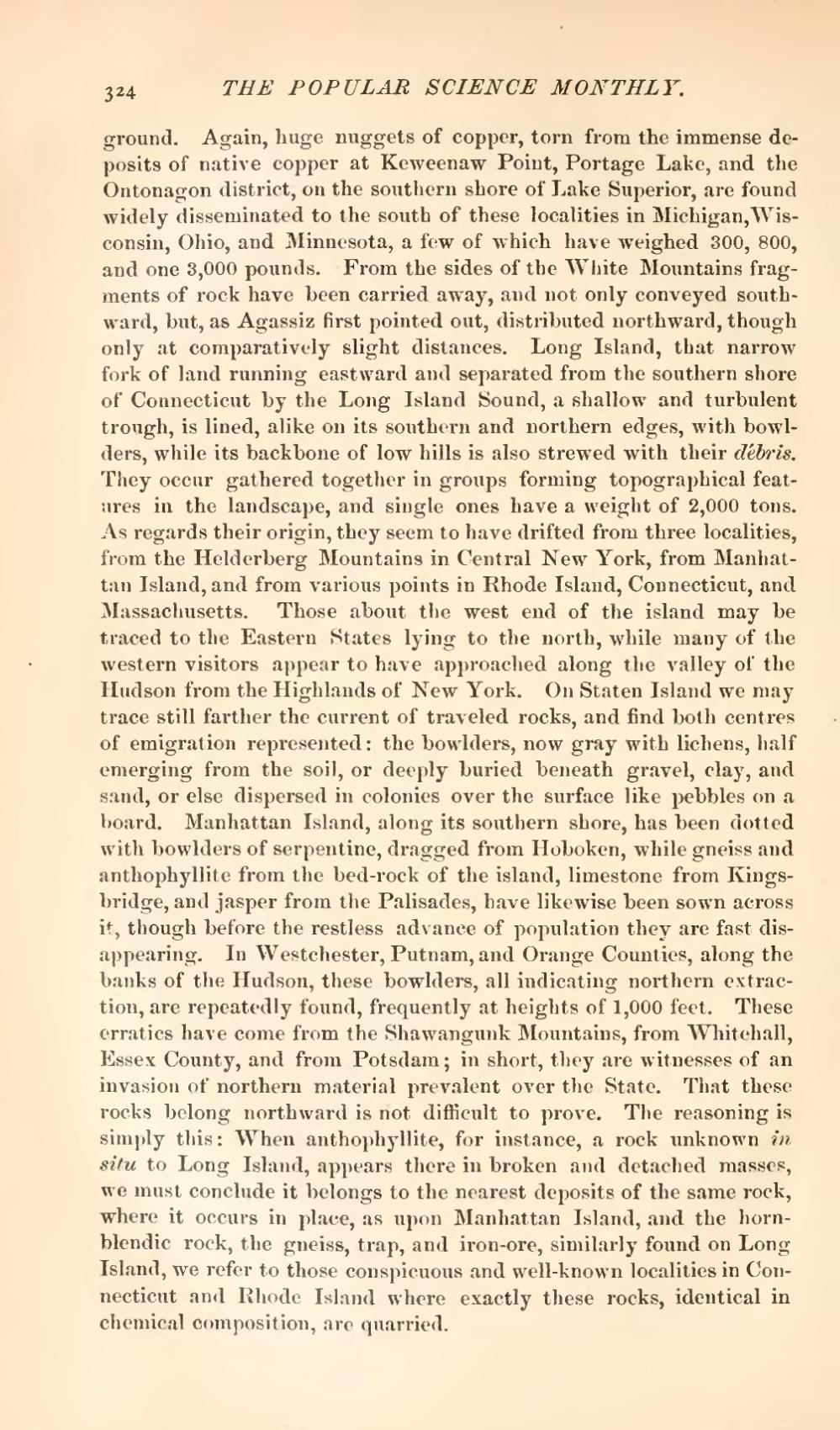ground. Again, huge nuggets of copper, torn from the immense deposits of native copper at Keweenaw Point, Portage Lake, and the Ontonagon district, on the southern shore of Lake Superior, are found widely disseminated to the south of these localities in Michigan, Wisconsin, Ohio, and Minnesota, a few of which have weighed 300,800, and one 3,000 pounds. From the sides of the White Mountains fragments of rock have been carried away, and not only conveyed southward, but, as Agassiz first pointed out, distributed northward, though only at comparatively slight distances. Long Island, that narrow fork of land running eastward and separated from the southern shore of Connecticut by the Long Island Sound, a shallow and turbulent trough, is lined, alike on its southern and northern edges, with bowlders, while its backbone of low hills is also strewed with their débris. They occur gathered together in groups forming topographical features in the landscape, and single ones have a weight of 2,000 tons. As regards their origin, they seem to have drifted from three localities, from the Helderberg Mountains in Central New York, from Manhattan Island, and from various points in Rhode Island, Connecticut, and Massachusetts. Those about the west end of the island may be traced to the Eastern States lying to the north, while many of the western visitors appear to have approached along the valley of the Hudson from the Highlands of New York. On Staten Island we may trace still farther the current of traveled rocks, and find both centres of emigration represented: the bowlders, now gray with lichens, half emerging from the soil, or deeply buried beneath gravel, clay, and sand, or else dispersed in colonies over the surface like pebbles on a board. Manhattan Island, along its southern shore, has been dotted with bowlders of serpentine, dragged from Hoboken, while gneiss and anthophyllite from the bed-rock of the island, limestone from Kingsbridge, and jasper from the Palisades, have likewise been sown across it, though before the restless advance of population they are fast disappearing. In Westchester, Putnam, and Orange Counties, along the banks of the Hudson, these bowlders, all indicating northern extraction, are repeatedly found, frequently at heights of 1,000 feet. These erratics have come from the Shawangunk Mountains, from Whitehall, Essex County, and from Potsdam; in short, they are witnesses of an invasion of northern material prevalent over the State. That these rocks belong northward is not difficult to prove. The reasoning is simply this: When anthophyllite, for instance, a rock unknown in situ to Long Island, appears there in broken and detached masses, we must conclude it belongs to the nearest deposits of the same rock, where it occurs in place, as upon Manhattan Island, and the horn-blendic rock, the gneiss, trap, and iron-ore, similarly found on Long Island, we refer to those conspicuous and well-known localities in Connecticut and Rhode Island where exactly these rocks, identical in chemical composition, are quarried.
